6 Common Filter Presses
A filter press is an equipment that separates solids and liquids from materials in a filter chamber by applying pressure to the filter plate. It is extensively used across various industries, including chemical, pharmaceutical, metallurgical, food, and environmental protection. Filter presses are available in multiple types, classified based on their structural design, operating principles, and level of automation. The following are the main types of common filter presses and their detailed introduction.
Plate and Frame Filter Press
The plate and frame filter press consists primarily of filter plates and frames arranged alternately, with a filter medium (typically filter cloth) positioned between them. During operation, the filtrate passes through the filter cloth, while the solid filter cake is retained within the filter frame.
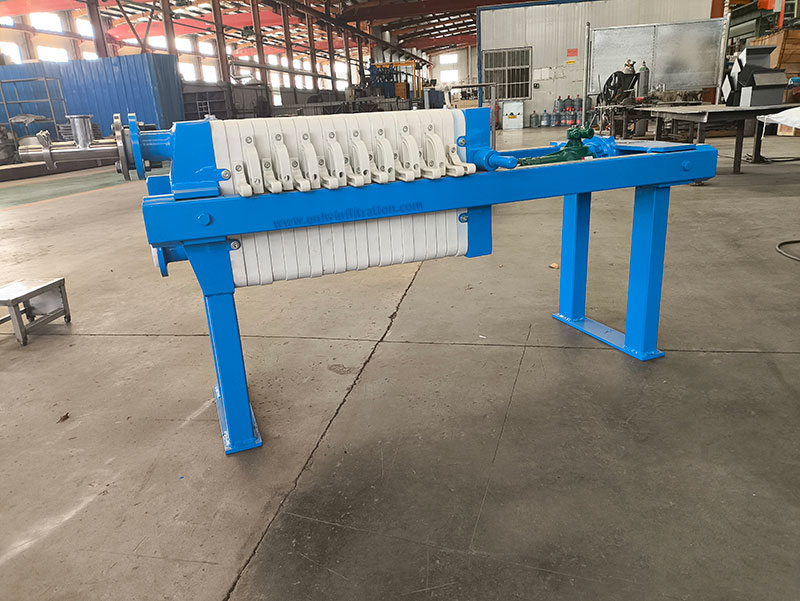
Main features
- Simple structure and easy maintenance.
- Suitable for working conditions with small and medium processing volumes.
However, there are many manual operations, low efficiency, and the sealing between the filter plates is slightly poor, which is easy to leak.
Application scenarios
- Laboratories, small sewage treatment plants.
- Processes with high requirements for solid recovery.
Chamber Filter Press
The filter plate surface of the chamber filter press has grooves. Two filter plates are paired together to create a filter chamber that holds the filter cake. The filter cloth is secured in place after being threaded through the central opening of the filter plate. Compared to the plate and frame filter press, the chamber filter press is capable of withstanding higher pressure.
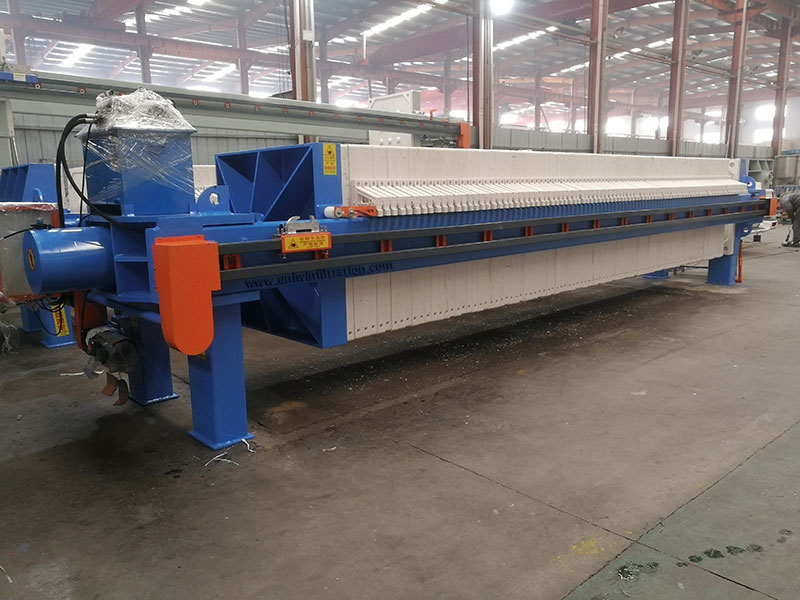
Main features
- The filter cake is formed evenly and has a low moisture content
- High degree of automation, suitable for continuous operation
But the filter cloth is easy to clog and needs to be cleaned regularly.
Application scenarios
Most industries, such as urban sewage treatment, mineral processing, and pharmaceuticals.
Diaphragm Filter Press
The difference between a diaphragm filter press and an ordinary filter press is that there are elastic diaphragms (usually made of rubber or polypropylene) on both sides of the filter plate. After the initial filtration, high-pressure air or high-pressure water can be introduced to expand the diaphragm for secondary squeezing, which can greatly reduce the moisture content of the filter cake.
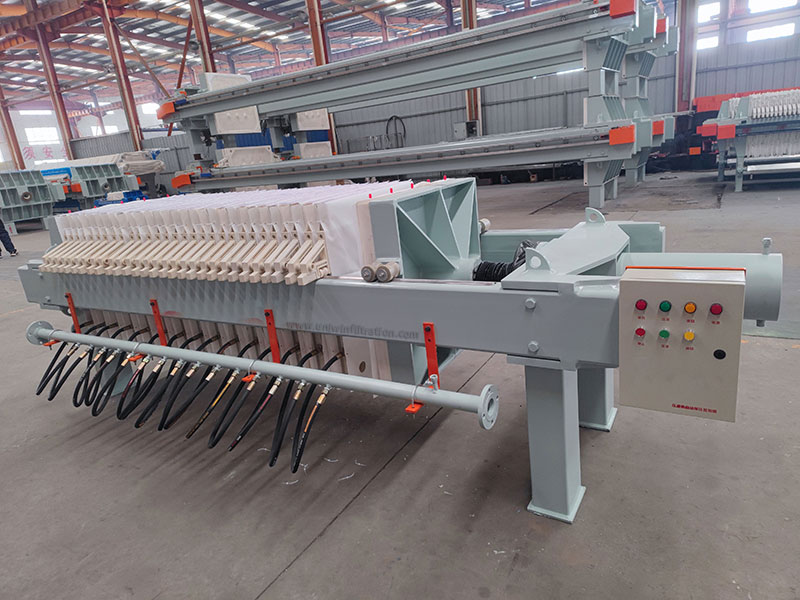
Main features
- The lower moisture content of the filter cake enhances drying efficiency.
- The filter cake has good shedding properties and is easy to unload automatically.
- It also increases the utilization of the filter chamber and reduces the filtration cycle time.
However, the structure is complex, and the maintenance technology requirements are high.
Application scenarios
- High-value solid recovery process.
- Chemical, pharmaceutical, fine materials, and other industries with strict dehydration requirements.
Jack Filter Press
The jack filter press uses a manual or electric jack to generate a clamping force, compresses the filter plate to form a closed filter chamber, and then starts feeding and filtering. It is commonly found in plate-and-frame structures. Generally, a manual screw jack is used, and sometimes a hydraulic jack is also used to improve the clamping efficiency.
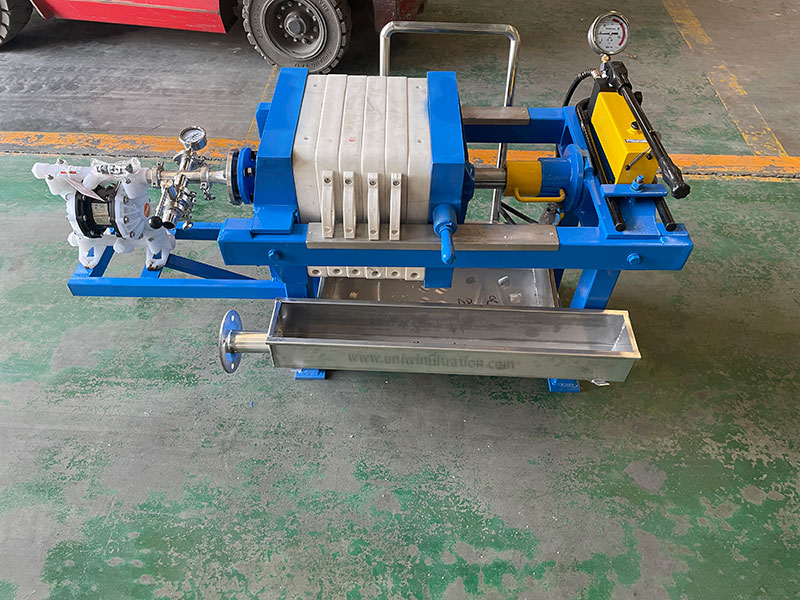
Main features
- A simple structure does not rely on a power or hydraulic system, suitable for simple conditions.
- Low cost, small initial investment, and low maintenance cost.
However, it relies entirely on manual operation, which is inefficient and not suitable for high-frequency, long-term, continuous operation.
Application scenarios
- Laboratory small batch sample testing.
- Simple solid-liquid separation needs in small manual workshops.
- Sample solid-liquid testing before mineral processing.
Cast Iron Filter Press
The filter plate is made of cast iron material and is integrally cast. It is usually a plate-frame structure, suitable for high-temperature and high-pressure occasions.
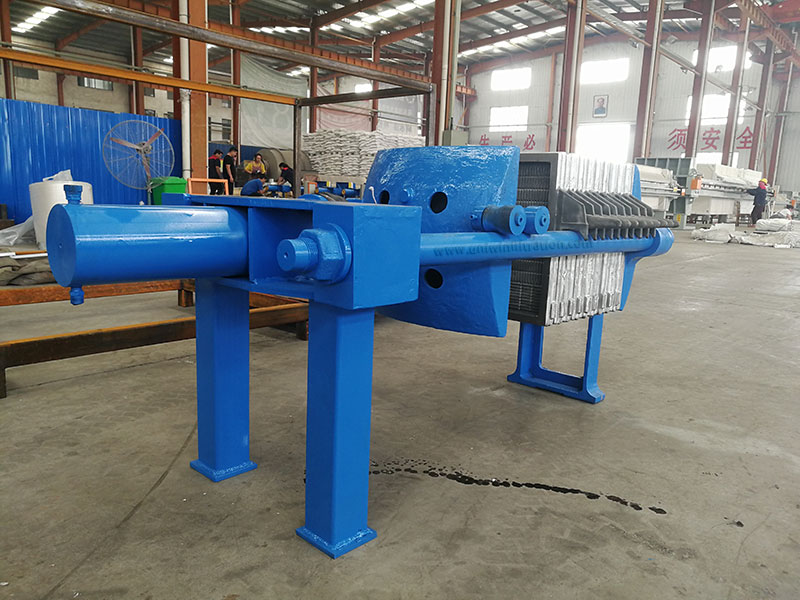
Main features
- High strength, high-temperature resistance, and good wear resistance.
- The filter plate is durable and resistant to deformation, offering a long service life.
However, its heavy weight makes it difficult to transport and install.
Application scenarios
- Suitable for processing neutral or weak acid and weak alkaline slurry.
- Solid-liquid separation in coal, ceramics, metallurgy, and other industries.
- Not suitable for areas with strong corrosiveness or high hygiene requirements.
Stainless Steel Filter Press
The filter plate and frame are made of 304 and 316 stainless steel. They can be plate-frame or chamber structures, and can also be matched with diaphragm filter plates. They are usually polished or sandblasted, and the surface is smooth.
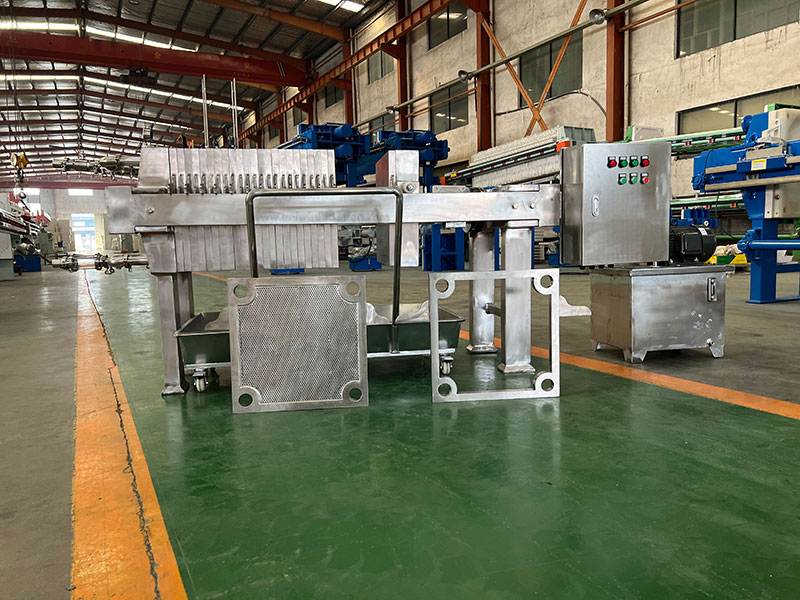
Main features
- It has strong corrosion resistance and can handle strong acids and strong alkali materials.
- It meets food-grade hygiene standards.
- It is easy to clean and maintain, and it is not easy to breed bacteria.
However, the cost is high, and there are certain restrictions on the filtration temperature and pressure (material selection needs to be based on the model).
Application scenarios
- Food and beverage industry (such as wine, juice, brewing, etc.)
- Pharmaceutical industry (such as Chinese medicine extract, raw material filtration)
- Chemical industry (high-purity material filtration, acid and alkali liquid treatment)
Conclusion
The above six types are the more common types of filter presses. We also produce more types of filter presses, such as belt filters, stainless steel filter presses, embedded filter presses, high-pressure circular filter presses, etc. If you need any filter presses, please contact us in time.
